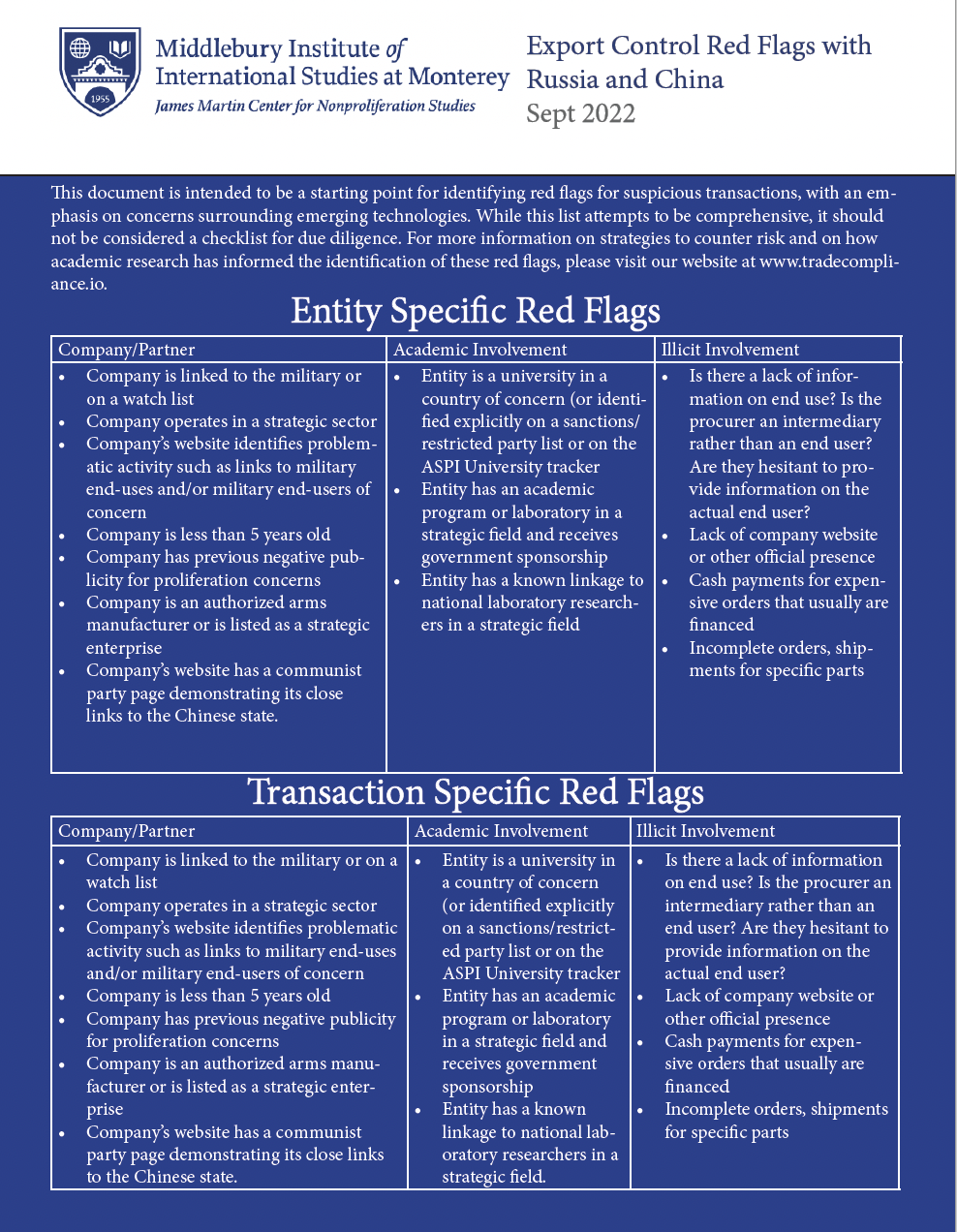This section draws together the due diligence elements identified from the analysis on this sectoral guidance.

|
Category |
Red Flag |
Source |
|
Company/Partner |
|
Company website, LinkedIn, news media coverage, sanctioned entity lists (in particular, the China country section of the U.S> BIS Entity List, and the U.S. DoD’s “Chinese Military Companies List” per Section 1260H of the NDAA of 2021; and the U.S. Treasury Dept. OFAC’s “Non-SDN Chinese Military-Industrial Complex Company List (NS-CMIC List)). |
|
Academic Involvement |
|
University website; U.S. BIS Entity List; Japan Foreign End-User List, (maybe EU / UK) ASPI Tracker |
|
|
Technology control lists, product order |
|
Shipping |
|
Product order |
|
Illicit Involvement |
|
See also the distributors section below |
|
Geography and Third Country Diversion |
|
|
|
China Specific Red Flags |
|
|
|
Transaction |
|
|
| Russia Specific Red Flags |
|